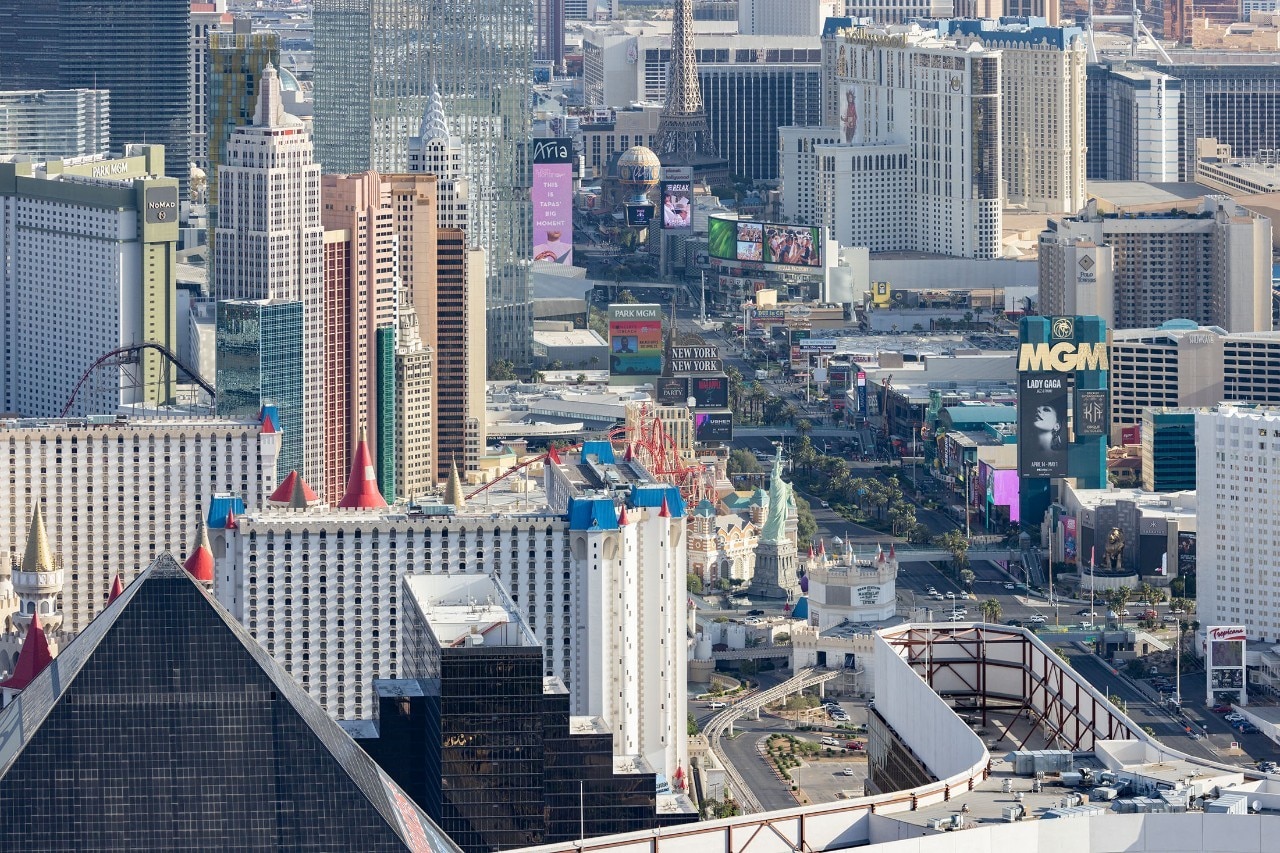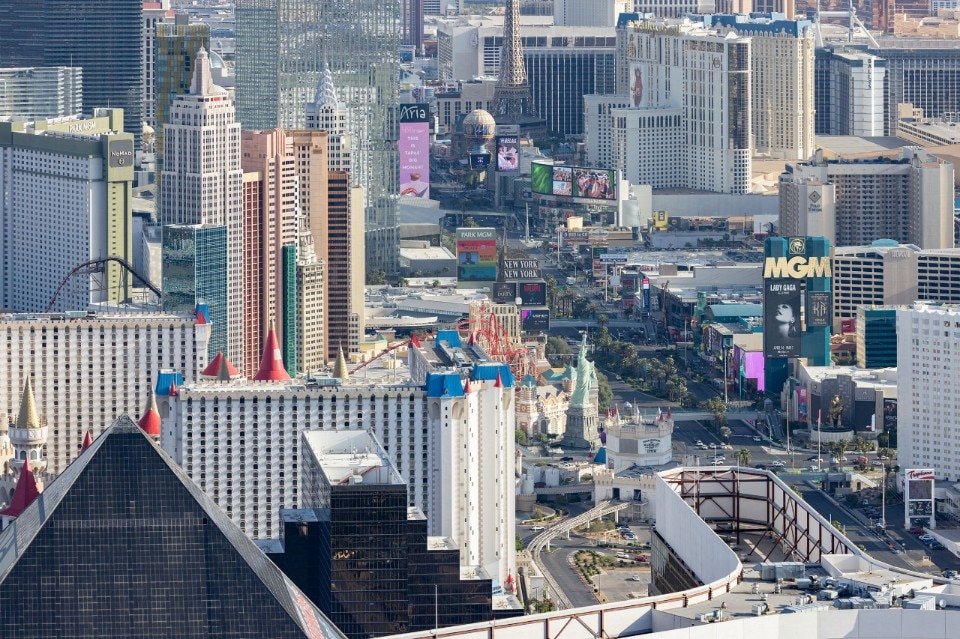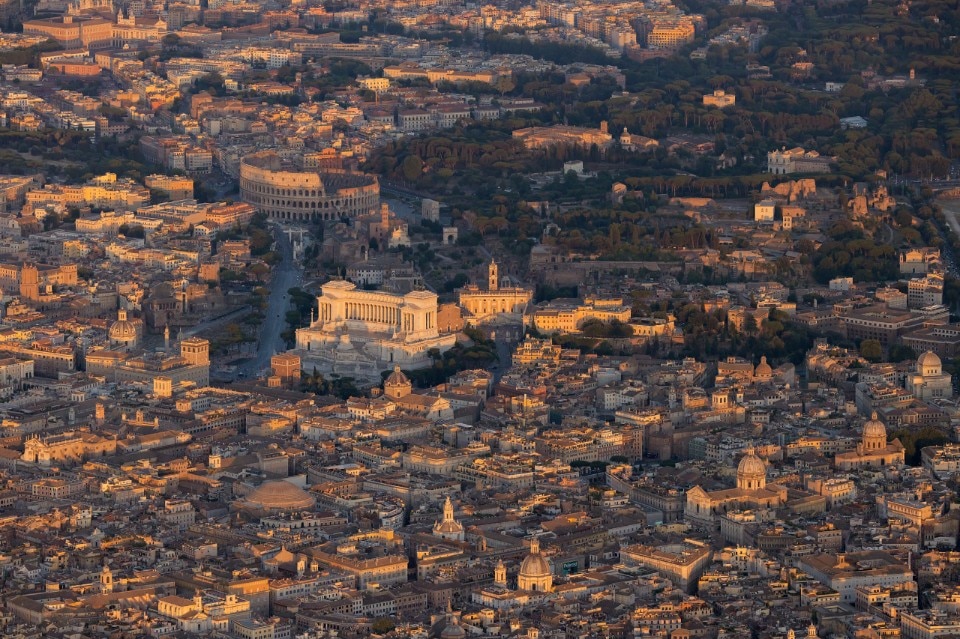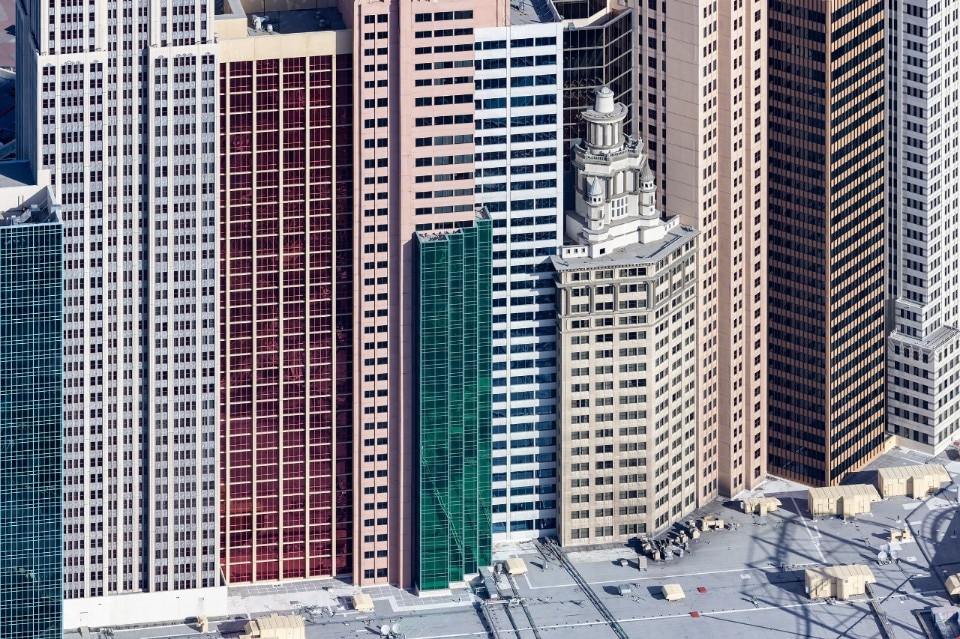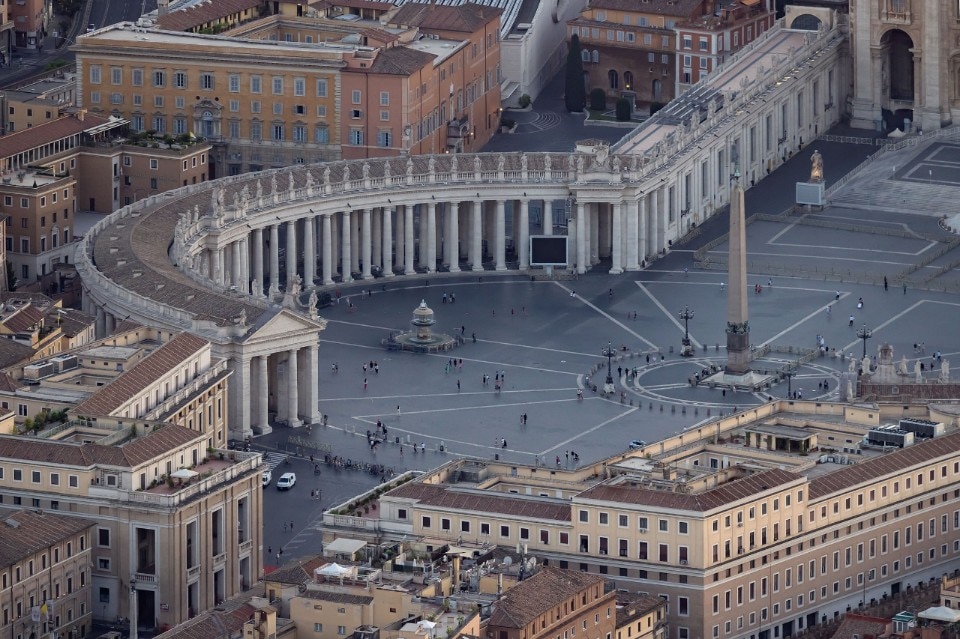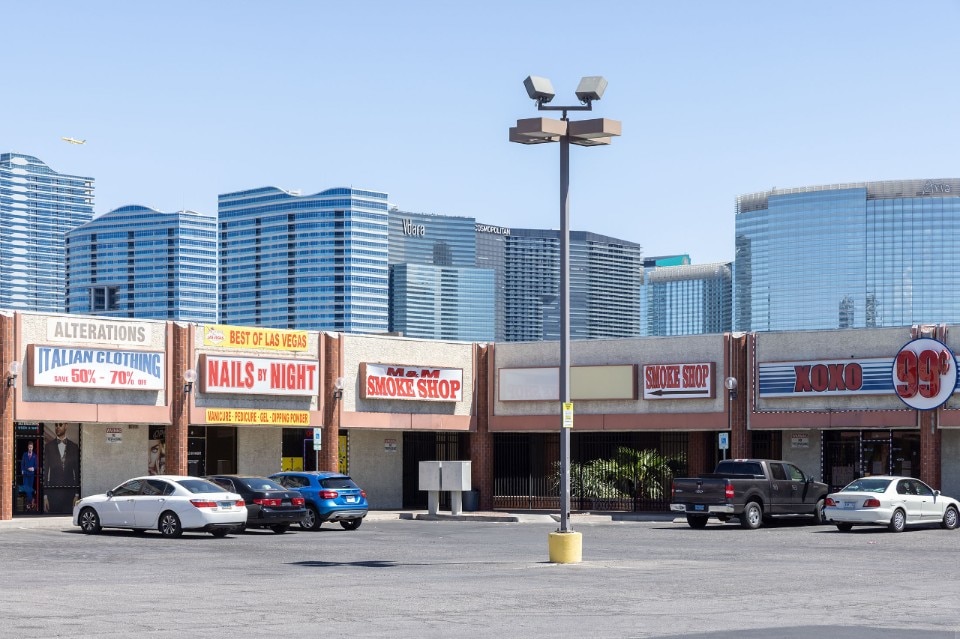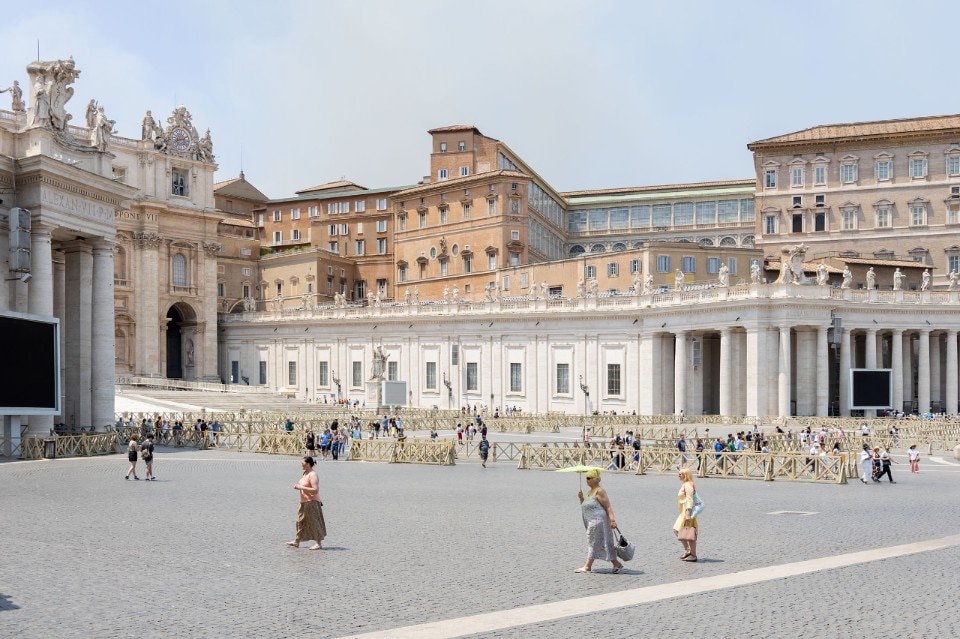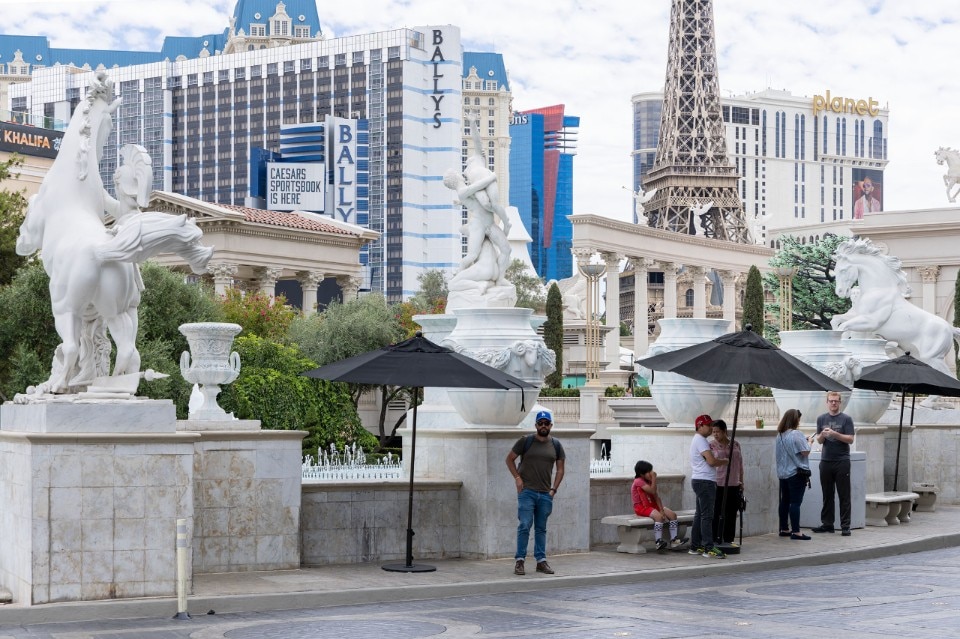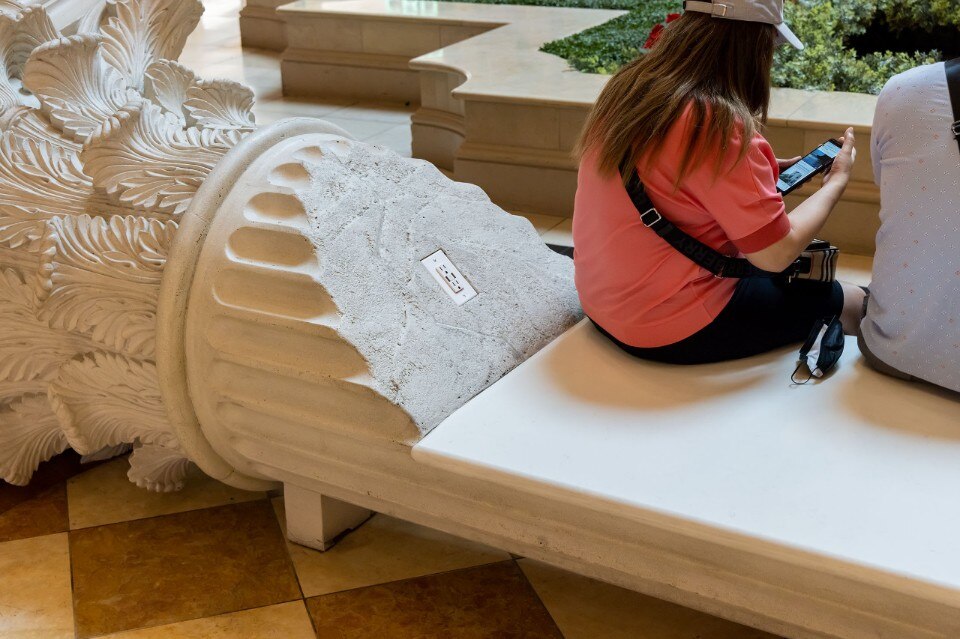Seen from above, the area south of Las Vegas is a flat expanse of low, anonymous industrial and residential buildings in the middle of the desert, cut down the middle by a long double row of large, brightly lit and differently beautiful buildings, in the middle of which runs the city’s busiest thoroughfare.
This is Las Vegas Boulevard South, better known as the Strip, the celebrated casino area that has featured in so many films and, above all, in an exquisitely American imagery.
Not exactly the cardo without decumanus imposed on cinema by the scenographic requirements of the Western genre, but an urban archetype that nonetheless has its roots in the typical vernacular architecture of the Far West, where the thin conceptual line between frontier and desert was crossed several times by pioneers who transformed the conquest of the unknown into a success story, of which Las Vegas is precisely one of the most emblematic cases.
Long snubbed by more academic thought, the commercial architecture – in monumental register – of this former post station in the Nevada mining desert that has become a paradigm of capitalist cities, is instead the focus of Learning From Las Vegas, the seminal essay with which in 1972 Robert Venturi, Denise Scott Brown and Steven Izenour revolutionised the way architecture looks at the world around itself, and thus at itself: not with the egotistical purism of a mannered modernism, but with an anti-moralist attitude, derived from Pop Art, that took into account the pre-existing in a non-prejudicial way.
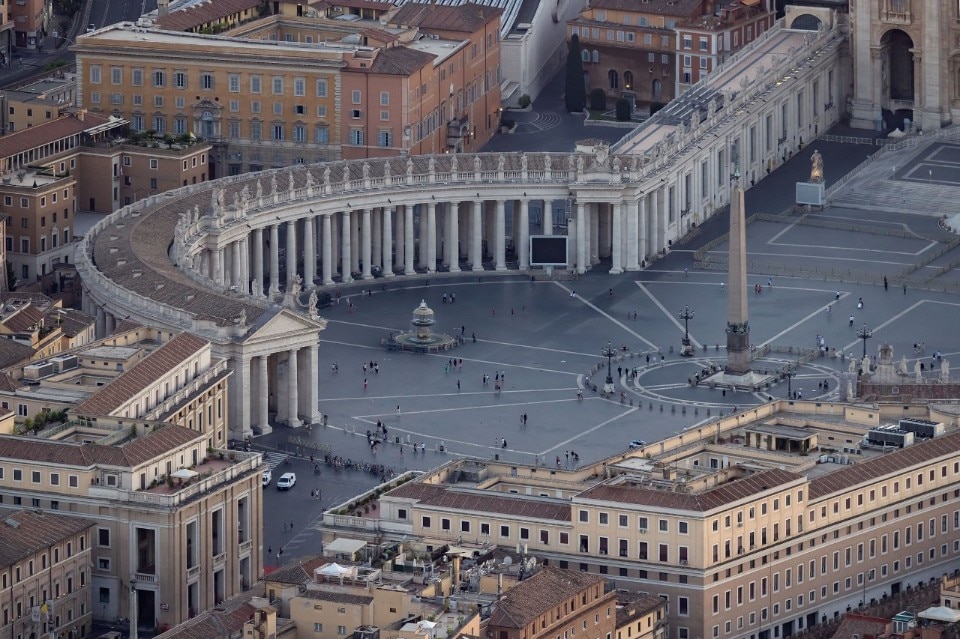
It is in this sense that, for American architects, in the 1960s Las Vegas took on the role that Rome – basically another, and much older, model of applied power and money – had played in the 1940s, when the rediscovery of the Piazza, another great archetype, had triggered a series of new reflections on the relationship not only between old and new (or between “Vitruvian and vulgar”) but also between public and private, and above all between artistic and commercial.
But if “Las Vegas is to the Strip what Rome is to the Piazza” is one of the book’s justifiably best-known statements, it is now a case of how much, in an era in which imitation and hybridisation have decreed the supremacy of the prototype over the archetype, his lesson is still valid.
Fifty years on, therefore, the American Academy in Rome (of which Venturi had been Fellow in 1956 and Resident in 1967) attempts a reinterpretation with the exhibition From Las Vegas to Rome, this time proposing to look at the capital of entertainment (and “sin”) to understand that of religion, culture, art and classical architecture. And it does so by entrusting its ambitious and complex iconographic apparatus to the most famous and prolific of contemporary architectural photographers, Iwan Baan.
This time comparing the two cities not only with his trademark bird's-eye (and often backlit) perspective, but also with the narrow fields and details that every comparative study requires, the dutch photographer ironically and lightly emphasises the short-circuits of sense, though not always of scale, triggered by their similarities. And in the confusion between setting and meaning, between medium and message, the disenchanted panoramic amazement of his photographs still seals a happy intuition from half a century ago.
- Title:
- From Las Vegas to Rome: Photographs by Iwan Baan
- Opening dates:
- Dal 6 ottobre al 27 novembre 2022
- Curated by:
- Lindsay Harris
- Location:
- AAR Gallery, American Academy in Rome
- Address:
- McKim, Mead & White Building, Via Angelo Masina 5, Rome, Italy


